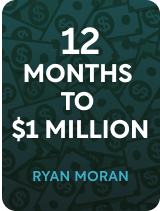
Why is inventory management important for small businesses? Where should you get funding to keep your business running?
Once you’ve launched your product, you must maintain inventory and keep your product in stock. Running out of your product can be disastrous for your business: It prevents you from making revenue, destroys your sales momentum, and loses customer engagement.
Let’s look at how to maintain inventory by receiving funding.
Maintain Your Inventory and Funding
Maintaining inventory can be tricky, however, because you have to anticipate the demand for your product. If your product gains sudden popularity and your sales volume spikes, you might run out of stock and be unable to fulfill all the orders.
(Shortform note: According to research, stockouts cause retailers to miss out on nearly $1 trillion in sales. So what should you do if you run out of stock? Experts provide tips for what to do to recover from a stockout: First, communicate the situation honestly with your customer, apologize to them, and offer a discount on an alternative product if possible. They also recommend you cut your marketing for that product to avoid wasting money and attracting customers to an unavailable product. In addition to this, you should also issue refunds and consider offering the option for customers to pre-order your product.)
One main challenge to keeping your product in stock is having enough money to order it. 12 Months to $1 Million by Ryan Moran recommends you have $10,000 available at your disposal at all times for this purpose.
(Shortform note: Many experts suggest businesses keep some money in reserve to deploy when needed, but there’s no strict agreement on what the amount should be. Rather than giving a hard number like $10,000, some recommend having enough cash reserve to cover three to six months of your business’s operating expenses. However, the amount of cash you should keep depends on other factors such as the stage of your business and what industry you’re in, so if you’re not sure what’s a safe amount to keep, you can consider consulting an accountant.)
If you don’t have that kind of money, there are some other options you can consider to fund your business:
Option #1: Find an investor. Bringing in an outside investor can be one of the quickest ways to get money, Moran writes. To give a successful pitch to an investor, Moran suggests you ask them for advice, not money: First, tell them how well your product is selling and how you plan to continue growing your business. Then, ask how they would fund your business if they were you. Asking for advice opens people to helping you, while asking for money closes them up.
(Shortform note: In Pitch Anything, Oren Klaff writes that to win over investors, you must appeal to their emotions not their logic. Klaff suggests three things you should do when pitching to investors: First, create desire and tension by focusing on the larger vision rather than on small details and data. Second, make them feel like they’re trying to win you over by not appearing needy and asking them why they should partner with you. Lastly, be humorous and lighthearted so that you don’t deter people. Though these specifics are different than Moran’s, the underlying idea is the same: Instead of directly asking for money, engage potential investors in different ways.)
Option #2: Run a crowdfunding campaign. You can get regular people to support your business through crowdfunding sites like Kickstarter. To create a compelling campaign, Moran suggests you create a video showcasing your product, your goals, and your plans for the future.
(Shortform note: Moran doesn’t specifically explain how crowdfunding works, but in The Success Principles, Jack Canfield writes that crowdfunding is when people give money to people, causes, and businesses they care about. Like Moran, Canfield recommends creating a video because it’s an easy way to share your passion, and he adds that campaigns with videos tend to raise more money. However, a common mistake people make is that they fail to directly ask for money. Canfield suggests you clearly explain why you need money and how you plan to use it.)
Option #3: Borrow money. Another way to fund your business is to get a loan. But, this option has some drawbacks: It can take a long time to get approved and you’ll have to pay it back with interest. Moran recommends you borrow money only when you know you’ll make money by using it—for example, when you’re sure you can sell all of your inventory and make a profit. Don’t borrow money for things that have no guaranteed profit. For example, don’t take on debt for advertising, because you don’t know how much money ads will bring in.
(Shortform note: Funding your business through loans is called debt financing. Financial experts provide some more pros and cons of debt financing that can help you determine if it’s right for your business. Some benefits of debt financing are that it’s tax-deductible, it allows you to run your business without ceding control or profits to private investors, and it can improve your credit score if you pay your loans on time. However, some disadvantages are that debt financing often requires you to use private assets as collateral and you may face higher interest rates as you take out more loans because lenders will view you as a riskier borrower.)
Once you’ve figured out how to pay for your inventory, consider Moran’s tips for avoiding a stockout:
Tip #1. Don’t wait to restock your inventory. Reorder as soon as you know your product has some demand. This should be right as your launch ends or when you start getting more than 10 sales daily.
(Shortform note: You can use inventory management softwares to figure out when to reorder inventory and avoid running out of stock. Many of these softwares have features for optimizing your inventory levels and making smart purchasing decisions, helping you track, record, and update your inventory to reduce errors and make the process more efficient overall.)
Tip #2: Increase your product price. If your product is selling faster than you can restock your inventory, Moran recommends raising the price of your product to slow the rate of sales.
(Shortform note: Moran doesn’t go into specifics about how to determine what your price should be in the first place. In The Personal MBA, Josh Kaufman describes several methods for pricing your product fairly and profitably. You can determine price based on your manufacturing costs and your desired profit, the cost of similar products, the long-term value that your product brings to your customers, or how much your product is worth to people who will value it the most.)
Tip #3: Place big inventory orders. Ordering your products in bulk not only allows you to avoid the risk of stockouts, but it also gives you more room to negotiate discounts with your supplier.
(Shortform note: While Moran suggests you order your inventory in bulk to save money, other experts argue that placing smaller, more frequent orders is better for maintaining an optimal inventory level. This allows you to avoid stockouts without having to store large amounts of inventory. Smaller orders also take less time to fulfill so they have shorter lead times (the time it takes for you to receive your inventory after placing your order). This means you can get your inventory faster if you run low on stock than if you ordered in bulk.)

———End of Preview———
Like what you just read? Read the rest of the world's best book summary and analysis of Ryan Daniel Moran's "12 Months to $1 Million" at Shortform.
Here's what you'll find in our full 12 Months to $1 Million summary:
- Why it's not only possible, but simple, to build a $1 million business in a year
- Proven techniques for creating breakthrough products
- How to decide whether to scale or sell your business






